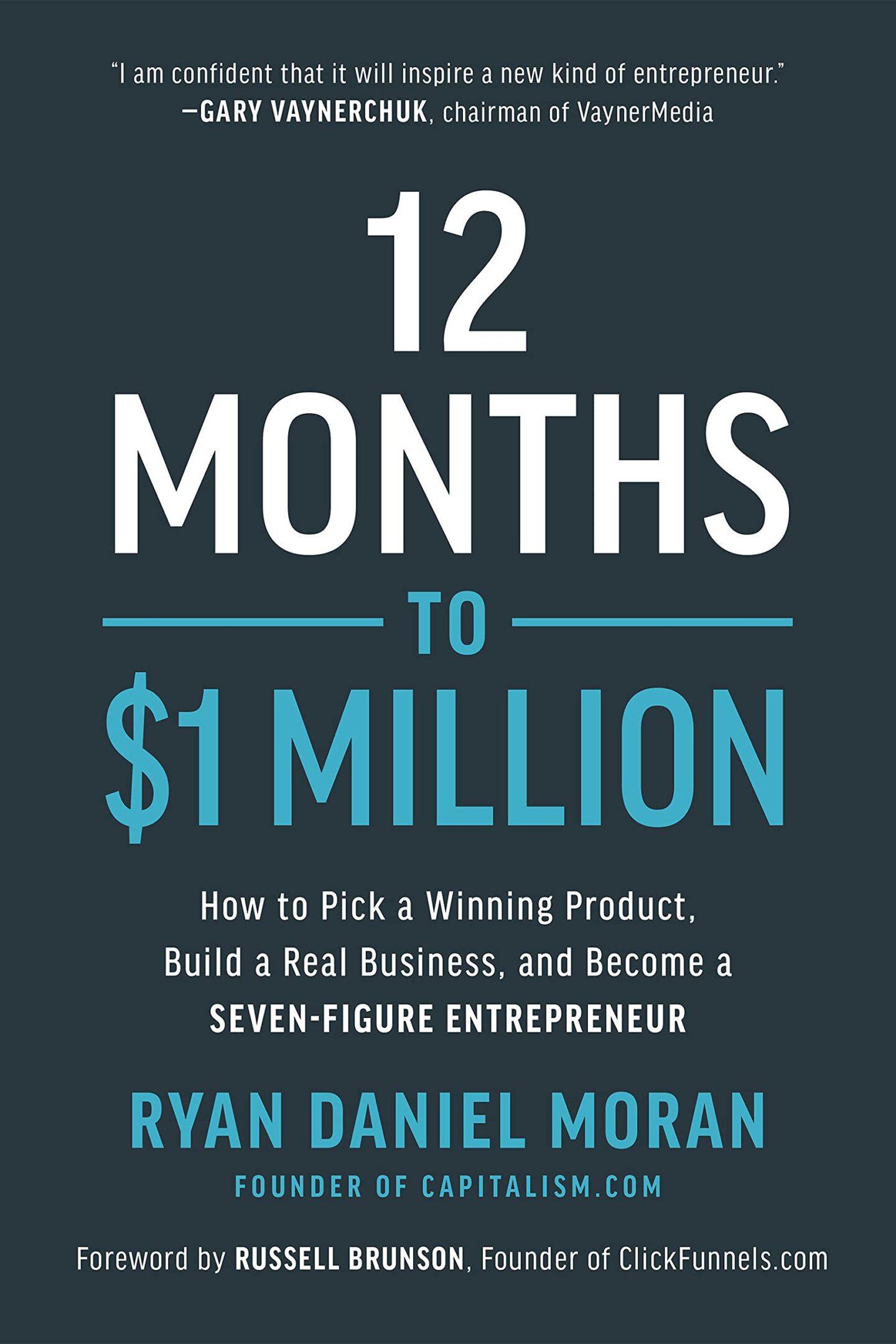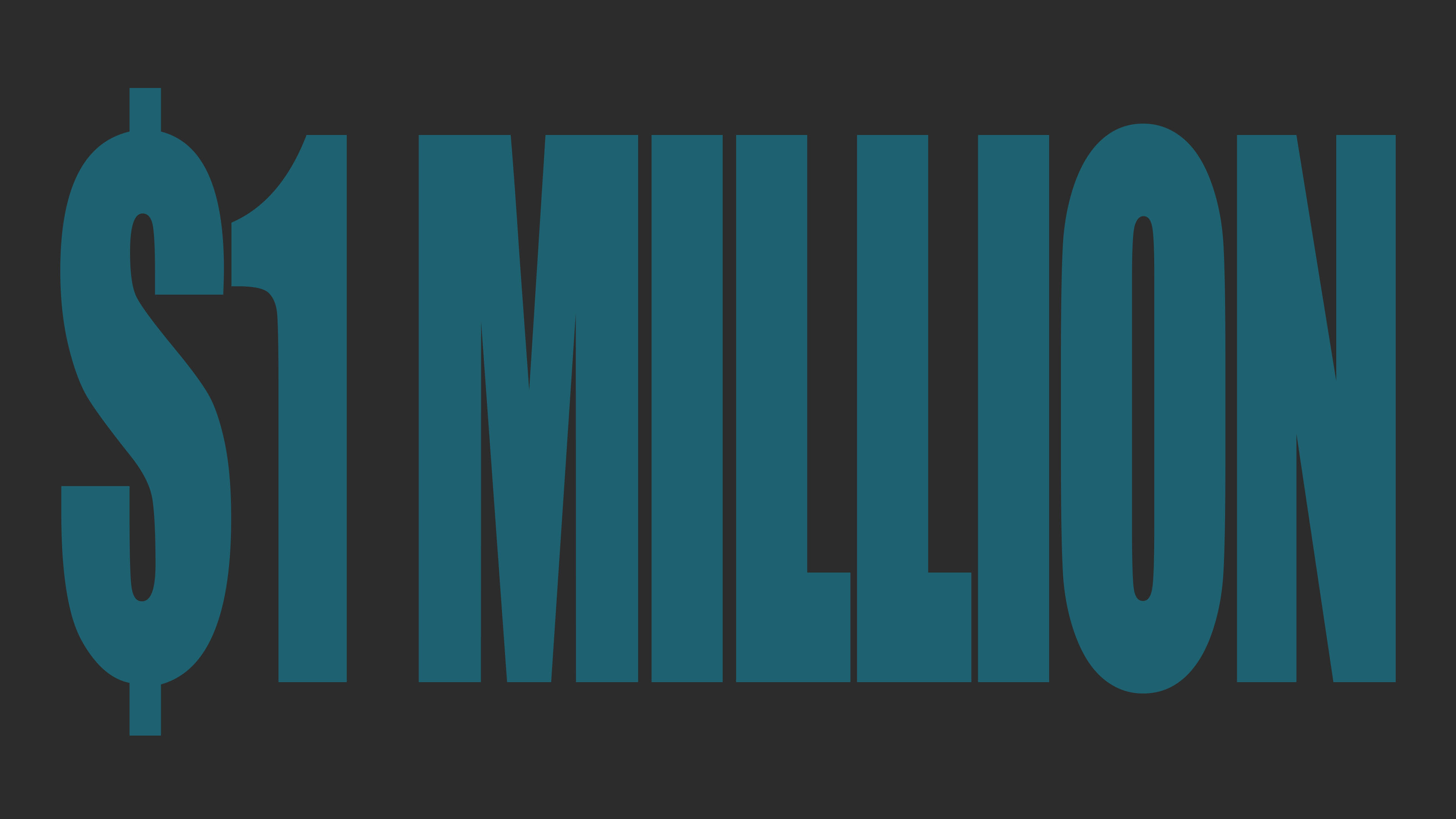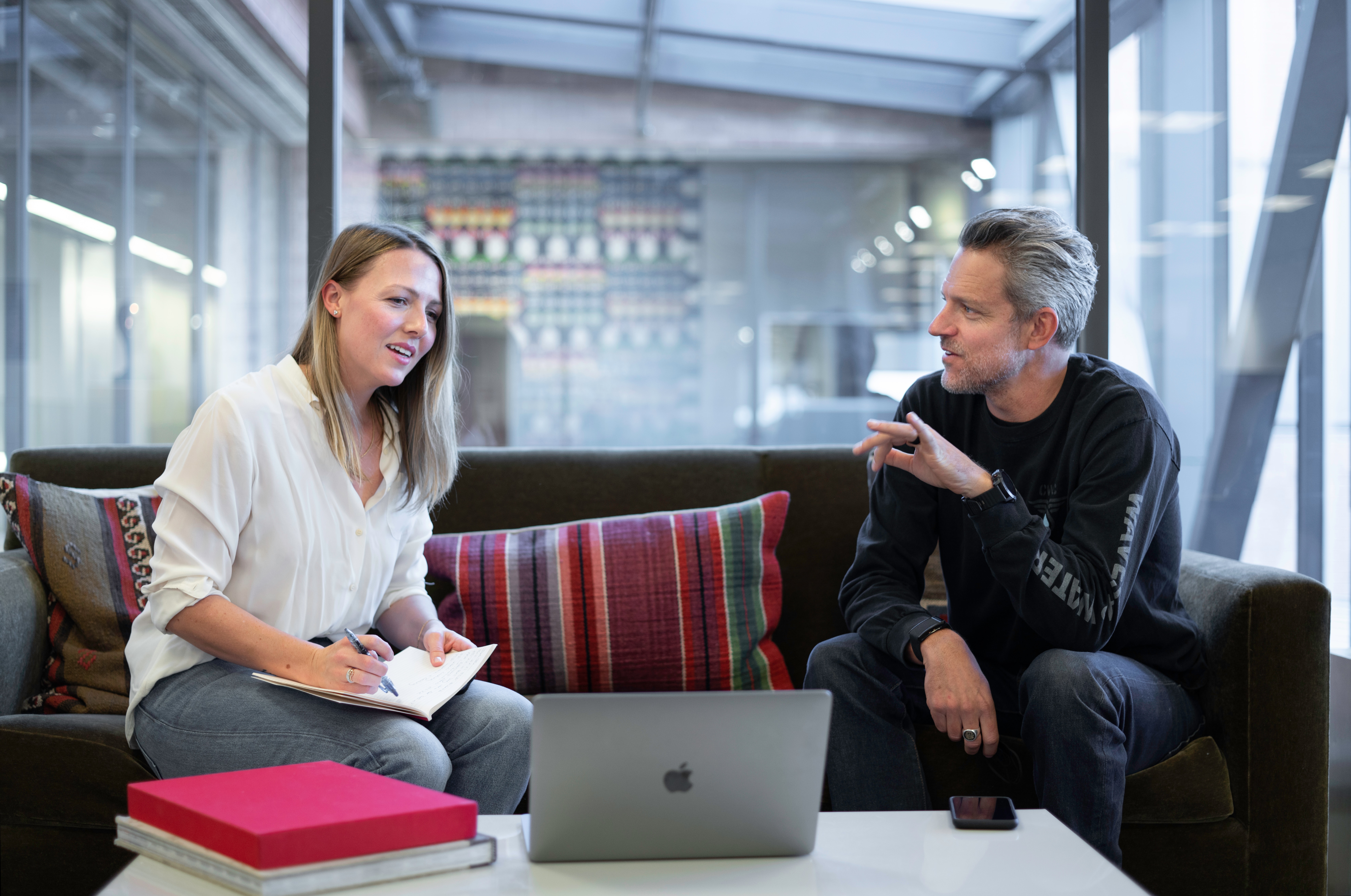GRKKT: This book is about a specific method of achieving wealth (mostly Amazon sales with Fulfillment By Amazon (FBA)), but there is so much funnel oriented content, it made sense to include it in my 3 part funnels series. If it’s any indication, Russell Brunson, founder of ClickFunnels.com, wrote the foreword.
Introduction
In the introduction he outlines the steps:
- Opportunity
- Mindset
- Getting customers
- Product
- Funding
- Stacking the deck
- Launch
- Scaling
- Marketing
- Acquisition
There are many routes to financial freedom. Many entrepreneurs try real estate investing, Kindle publishing and affiliate marketing. The options are endless and this confusion keeps them stuck. They can clearly see various business models from which to choose, but the choice itself is the obstacle.
GRKKT: It is this stage of the process I think that is the most difficult along with creating the required alignment with your overall life goals. This is the most important stage and the one startup mentors don’t want to touch with a 10 foot pole. It seems most books, mentors, accelerators and VCs (understandably) are only interested once you have decided you want your startup to be a unicorn, you are generating revenue and you are close to Product Market Fit (PMF).
Once people have successfully implemented his methodology to cross the $1 million annual mark, he runs an accelerator called The Backroom where he takes 20% to 40% ownership to mentor them to a larger size and then navigate through an exit.
Money, which is a by-product of good work, will flow to you as soon as you realize it’s not about what you can get, but what you can create.
True growth is like interest. It compounds over time. This is what you want vs. getting paid by the hour for a task.
Chapter 1 & 2
Mostly a pep talk in my opinion.
Chapter 3
Choose your Customer
Focus on people not products.
I feel he means something slightly different than “build something people want.” The author decided his people were bodybuilders at the gym. He came up with a pre-workout powder that helped with endurance. His follow up products might be protein powder, workout recovery powder, gym bag, sweats, clothes or a book. This is different than expanding his product by creating new flavors and then selling them to long distance athletes and people who work long hours truck driving. This means building a brand of solutions for your audience rather than trying to figure out the best audiences for your predetermined solution (famously called by Y Combinator a SISP – Solution in Search of Problem).
This is different than repeatedly iterating to solve the same problem (workout energy) or questioning if you simply need to sell it to a different market (pro athletes).
Example 1
Dave Asprey from Bulletproof coffee was actually a health and diet activist with a following of 60,000 people and he sold organic, mold-free coffee, along with other coffee additives, energy bars, etc.
GRKKT: The issue I have with this and many other project-based strategies is they skip over how to build a following of 60,000 people.
Example 2
Another example is James, a sportscaster for ESPN, who was struggling with insomnia. He discovered that blue light filtering glasses when he used a computer helped him sleep at night. He made some that didn’t look dorky and sold them on Amazon. They sold really well, but what’s the follow up product? If he’s focused on product it, would be different styles of sunglasses shades or other kinds of glasses. If he’s focused on people, it will be additional sleep aids that may have nothing to do with glasses.
Identify your Gateway Product
For the coffee guy the gateway product was coffee. The second product however was not another flavor coffee. It was coconut-based oil, then souped up the coffee with another supplement that slows the absorption of caffeine, then protein bars and whey protein, etc.
He believes in knowing what your follow up products are from the beginning, so the base product sets you up to sell the future products. At least you have a product roadmap. It takes 3-5 products to have a business.
The Process
- To whom are you going to sell?
- What do they buy already?
- Which product out of that suite of products do you want to focus on either to make a better version or one that solves that problem?
- What does your group think about similar products currently on the market?
- Where do these people hang out?
- Do you know how you will get predictable sales? He simply means distribution channels (Amazon)?
- What will be products two, three and four?
In the deodorant example he gave, the founder almost gave up because he got no feedback on Product Hunt. However, a friend had an “in” (influencer connections?) at Product Hunt and they got him boosted to the number one product of the day.
Later in the story the owner turned down offers to sell at Walmart, Target or other brick and mortar stores and also refused to pay any influencers. He feels that if sales are growing and you’re doing well, perfect the things that are make your sales grow instead of trying to expand your methods.
GRKKT: Not sure I buy into this 100%. Of course, lean into what is working, or as Andrew Chen says, grow by perfecting 1 acquisition channel at a time. However, the best channels will change and you must continue to split test methods as you grow.
NOTE: Here he provides a great case study on putting all of the above into action.
When you start with people and create products for them, you become a price setter, not a price follower. That gives you better profit margins. And you get repeat customers, rather than one-off sales.
- Ryan D. Moran Tweet
Chapter 4
Develop Your First Product
He said Amazon.com is great, but they also have a lot of competitors you could use.
The Process
- He did yoga mats and talked to a lot of people about what they didn’t like about the yoga mats and did a lot of research on blogs.
- He sourced a supplier on Alibaba that already made mats that that fit that description.
- He doesn’t believe in prototyping something that’s custom to start because he feels you’ll lose 3 to 6 months doing this.
Focus on get something launched so that you can get real feedback immediately.
He believes in the beginning you should not worry about maximizing profits…just establish systems to get the product sold.
GRKKT: Here he provides a great case study on putting all of the above into action.
Chapter 5
Funding Your Business
Funds Required
To get started with your first product you need about $10,000. OR….
Crowd Funding
If you want to go down the path of crowdfunding, you will need three things.
- A great video.
- 10 ideal customers in your network we’re excited about what you’re doing.
- You need at least one micro influencer who can help spread the video message who has at least 10,000 followers
Kickstarter – this is to start
Tim Ferriss has great training on his blog about using Kickstarter.
GRKKT: Note that Kickstarter is not equity crowdfunding. The rewards you provide “investors” are supposed to be non-monetary. Autographed copies of your first 10 products shipped, special editions not otherwise available, etc. As such, the average amount raised on Kickstarter is around $5,000, because people are looking for memorabilia and supporting something they believe in, not a return on investment.
Kickstarter provides an early fan base and a story that can be sold to influencers. It also allows you to pre-sell product without the pressure deadlines of delivery that Amazon will give you.
You can start looking for influencers by looking at local press or within forums for small influencers that have some following. Based on growth and a few write-ups you can ask slightly larger influencers to write about you and then work your way up the chain.
Bank loans, Kabbage.com – this is after you have revenue
Loans for businesses at high interest rates may be a good Band-Aid patch to prevent you from running out of inventory. Amazon lending is also available if you have 12 months of sales track record.
He feels it’s OK to take loans to Band-Aid patch through bottlenecks of a growing business. Do not take on debt to launch an unproven business. Wait until you have predictable sales to take out debt! Use money as an amplifier not a magic wand.
Capitalism.com/funding provides some other options.
If Undecided, Raise Prices
If you were unsure about taking on funding don’t go into debt. Raise your price. Make a list of investors who you might want to work with. Tell them what you are up to and keep them posted on progress.
ROI Arbitrage
One of his most famous YouTube videos is about how to use a loan against your house to buy a website that is producing 25% per year of passive income. I have searched and cannot find this specific video. In his opinion, borrowing 5% of your house value to make 25% is a good way to leverage debt.
GRKKT: Here he provides a great case study on putting all of the above into action.
Everything you’re doing in business is really just audience-building.
- Ryan D. Moran Tweet
Chapter 6
Stack the Deck
How to guarantee sales from day one
He believes you need to stack the deck so that you have people waiting to buy a product the day it’s released. The time between ordering your inventory and it being ready for sale can range anywhere from two weeks to three months. During that time:
- Identify where your target market already hangs out.
- Create a series of content directly targeted to that person.
- Document the process of your product.
- Start announcing when the product is going to be available.
- Reach out to your own personal contacts and start lining up one influencer.
- Finally build your list of fire breathing brand advocates (early adopters).
Example:
- Create a Facebook business page.
- Have 10 of your friends post for you on their pages too and send it out to their network.
- Spend $10 a day on advertising to build a following.
- Document the Kickstarter campaign on your Facebook page. This can be anywhere your audience hangs out. Wherever you can effectively get in touch with them.
- One student of his did Facebook live Q&A each week.
- Cross post YouTube videos on your Facebook page.
- Use Snapchat, LinkedIn or whatever new cool platform your audience is using now.
- Post with relevant content about current topics that everyone is already talking about, not just your product.
- After 30 days they had about 3,000 people who like their page.
- Most importantly, document your product release on the page. Don’t brag about it or try to sell it. Simply ask others their opinion, explain the differences, share your changes and get feedback.
Kickstarter Presales
If you are on Kickstarter you can pre-sell a lot of product, gaining faster sales momentum. On Amazon you can’t go live with sales until there’s actually inventory in the warehouse. Creating a buzz gets people talking about you on social media and sharing the product with your friends, boosting your SEO visibility.
If you do this correctly, you should have enough momentum to move the first few hundred units of your product.
Target Metrics: The Formula
To get 100 sales on your launch day, he feels you need:
- 1,000 followers in one place (on one platform)
- 10+ personal contacts (who will repost to their network for you)
- One influencer with a 10,000+ following
Example: He gave out free yoga mats to friends and requested they post about it on social media launch day.
Influencers
The influencer must have at least 10,000 contacts. That is the magic number. 3 ways:
- Partnering with influencers: make them an official part of the brand is the best shortcut to put a brand on the map.
- Sponsoring a related podcast or YouTube channel that already has an audience can pay dividends.
- Ask them to voluntarily mention your product. The trick is not begging them to cover your product on the podcast show. The trick is providing content that their audience would love and suggesting that it might help that influencer to provide it.
Launch Day
Make sure people know there is a limited quantity on the first go around and if they register on the special launch list, they will be first in line ahead of everybody else when it goes live.
GRKKT: Here he provides a great case study on putting all of the above into action.
Chapter 7
Launch of Your First Product
He feels you can launch on Kickstarter or Shopify to fill some of your orders, but the biggest opportunities are going to be on Amazon.com.
Look at frequently bought together pairings to get an idea of other products your buyers might be interested in.
Out of Inventory: #1 Problem
He feels the moment you start seeing sales, re-order. He thinks running out of inventory is the biggest problem you will have and that running out of inventory essentially brings your momentum to zero. At that point, you have to completely re-launch your product with two months of promotion.
Don’t Rely on Amazon Reviews
Drive traffic from your website or other places. Otherwise you have a business strictly dependent upon Amazon. He feels the reviews on Amazon are important but they should not be the sales driver as much as the relationship you’re building with your community on Facebook and elsewhere. Reviews on Amazon only confirm they are making the right decision.
Conversion Rate > Ratings
Important: Amazon search results are driven by conversion rate more than review ratings. If people go to Amazon to buy your product and then buy it, you’ll have a high conversion rate.
Kickstarter Case Study
In this example, Cathryn wanted to do a Kickstarter launch. Her partner wanted to do “Product Launch Formula.” They decided on a hybrid model. She put out content on Medium.com. She outlines her strategy using a one-dollar reward level on her project so she would get more visibility. The Kickstarter algorithm prefers the number of pledges over the total amount pledged. 1,000 pledges of $5 is better than 10 pledges of $500. On the next page, she talks about setting up early bird rewards that equal your funding goal.
Product vs. Business
Cathryn talks about the fact that on Shark Tank entrepreneurs are criticized because they have a product, not a business. Ryan’s theory in this book is that you must have three or four products centered around a single customer before it’s considered a business. Anything else is just selling a product.
Inventory Manager
He emphasizes the importance of hiring someone to handle inventory once you’ve expanded your line from one item to 10.
GRKKT: Here he provides a great case study on putting all of the above into action.
Chapter 8
Going to 25 Sales a Day
He outlines the story of Aubrey Marcus who developed nootropic alpha brain supplement named Onnit.
He might have 20 or 25 sales a day during launch but that will grind to a halt. You’ll need reviews, testimonials and to invest in advertising to continue to stroke the fire the next few months and strategically launch of following products.
The first time he launched a product it took him three months to get to 25 sales a day.
Getting Reviews
When requesting reviews do not send automated emails that say, “Hey, I hope you liked the product, can you please leave us a review.” Instead, ask, “Did you order arrive on time? We wanted to check and make sure.” If they respond with “yes” say, “Thanks for the feedback. We just credited your account $10 as a thank you. Is there anything else we should know about? What would you like us to release next?” If they respond, you say, “Thanks for the kind words. If you feel like sharing your experience, we would love your feedback in the form of an Amazon review.”
What to do if you’re stuck
Go supermicro. What can you do this week to get 10 more views? What can you do this week to blow away a customer? What can you do this week to motivate your fans? Who can you contact who might talk about you publicly?
Page 126 ideas
- Use Amazon’s pay per click platform.
- Run video ads on Facebook, Instagram and YouTube.
- Put attention back in the building of your community.
- Ask your customers why your product is not getting more traction
Product No. 2
When? When you hit 25 sales a day on product number one. This is roughly equal to 10,000 and 15,000 month on a single product.
GRKKT: Here he provides a great case study on putting all of the above into action.
Chapter 9
Build $1 Million Brand
Product 1 plateaued at 25 sales a day. Once you release two products the sales from each will bolster the other because Amazon will list them as two products frequently bought together. The sales of product two will boost the sales of product one.
Release more products as quickly as you can comfortably handle without getting distracted, but make sure you launch them one at a time after building some buzz about their release.
Growing from one to many
When releasing the first product, you’re building an audience. When you release the second, your audience is already primed and responsive.
Because you can’t handle directly responding to every customer any longer, take screenshots of positive reviews and share them. Get customers to do video testimonials and post on Facebook. You are also now in a better position to approach influencers since you have a track record.
Developing product number two
It should answer the question “what’s the next thing that my first customer would want to buy?” Do not try to pursue a second niche market with the next product. Accessories, additional colors or new sizes are not a new product.
18 months
When you release a new product on the market, you have about 18 months before people will start copying your idea. You must innovate and stay ahead of the curve.
Cross Sales
Find other companies to target the same audience and cross sell with them.
Formula
3 to 5 products each selling 25 times a day at a $30 price point = 1 million
GRKKT: Here he provides a great case study on putting all of the above into action.
If they buy on Amazon.com, then they are Amazon’s customer. If they buy at Walmart, they are Walmart’s customer. They’re not your customer until they know who you are, and they choose to come back to you.
- Ryan D. Moran Tweet
Chapter 10
Getting $100,000 per Month
If I can spend more money to acquire customers than my competitors, I’m going to win every single time. Marketing is being in a committed relationship, not a one-night stand. He feels paying big-time influencers is a bad idea because there’s no trust established.
Start where your audience already hangs out
If you want to maximize your podcast exposure advertise on other podcasts. Don’t try to convince people to go from one platform to another. Be channel agnostic. Who’s already buying products like the ones I’m going to launch and where are they hanging out now?
Most impactful platforms in order of the most powerful are:
- Podcasts
- Blogs and email lists
- YouTube videos
- Social media
Where does your audience hang out?
You want endorsed traffic on that platform, meaning somebody else speaking on your behalf. Let’s say for example you wanted to access the intellectual dark web, a small group of podcasters…Sam Harris, Joe Rogan, Dave Rubin and editor Ben Schapiro.
You’ll have to network your way up to those people. Start by searching hashtags on Instagram. Subscribe to niche podcasts and notice who is regularly getting booked as a guest. Subscribe to YouTube channels and watch the water cooler conversations happening in the space. Use similarweb.com to find blogs and websites that are impactful.
Make relationship deposits
Don’t be an ask-hole.
Get the smallest yes possible
Start momentum by going for the smallest yes possible. The easiest yes is to offer giving someone money.
The author has paid speaking fees, donated to charities, offered to do bulk buys of books and sponsored podcasts in advance, all to build relationships with the right people. It’s some of the best money he’s ever spent.
Giftology Group
Check into the company Giftology Group. Gift first and watch how fast your network changes.
Relationship deposits with influencers
He shares influencer’s content and makes introductions. What can you offer them? Feature influencers in front of your audience. Offer to email their content to your audience. Find out where they are giving a keynote and buy a VIP spot. What charity are they into you can sponsor? Give your product away to their audience.
If your influencer says yes
Use the exposure they give you to build an email list. Collect people’s emails by driving them to your website and have them fill out a form. Offer “10% off if you go to our website.” Is it working? Check how many people go to the link before they go to buy.
Publicly thank your influencer. Make a point to make them look good to your audience. Send them a care package of your products. If they talk about you on a post, screenshot it and use it in an ad. Kill your influencers with kindness.
GRKKT: Here he provides a great case study on putting all of the above into action.
Chapter 11
Put it All Together
Stage 1
- Define your core customer.
- Outline 3 to 5 products your customer buys.
- Choose your first product.
- Pick a place to document your journey.
- Order prototypes and your first order.
- Stack the deck.
- Take an order.
Stage 2
- Does your audience actually want your product?
- Micro focus. One review, post and customer at a time.
- Cultivate a core group of buyers.
- Utilize PPC advertising and video ads.
Stage 3
- Only launch products that are multipliers.
- Advertise via influencers and audiences.
- Make relationships not transactions.
- Pay yourself.
- Take strategic risks.
Chapter 12
Selling your business
Selling your business is like doing your taxes every day for a year. Awful.
In this chapter he explains his regret in selling to big companies. He warns against old blow hard sales managers with big paychecks and no work ethic with expensive magazine ads and traditional marketing.
These companies lose touch with their grass roots following. Mistakes to avoid include:
- Optimizing for vanity metrics.
- Forgetting you’re in the people business.
- Making decisions based on algorithms or whatever product happens to be hot right now. Make your product development decisions based on real market feedback only.
When selling a profitable business, you hold the cards. Think about your long-term goals, what you’re looking for and be the one that makes the demands. You should be vetting them, not the other way around.
It’s very rare to sell your company at 100% and walk away. It’s more likely you will sell a majority share, usually about 60%, hold onto the remainder and have to serve as an advisor until the new group owners are up to speed. You need to like the people you’re doing business with and trust they’re capable. He charges 20% ownership to act as a mentor to get ready for sale to ensure the payday is good.
Money is like alcohol. It makes whatever is true come to the surface. Insecure people become more insecure. Giving people become more giving.
Conclusion
The above summary helps you understand his overall methods, but you must purchase the book to get the example case studies! This is how you will best learn his implementation techniques. There are additional details to the steps I listed above you really need to know. I can’t recommend the book highly enough.

12 Months to $1 Million: How to Pick a Winning Product, Build a Real Business, and Become a Seven-Figure Entrepreneur Hardcover – May 5, 2020
by Ryan Daniel Moran (Author), Russell Brunson (Foreword)
4.7 out of 5 stars 1,774 ratings





